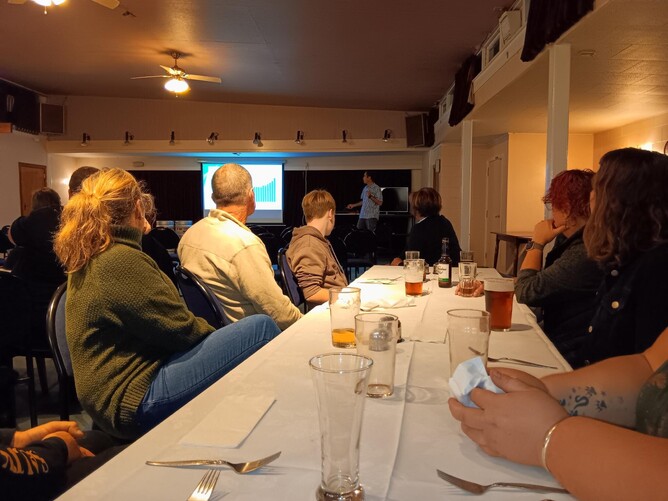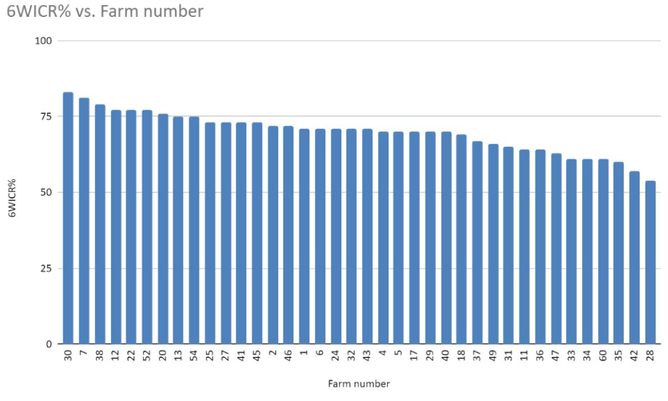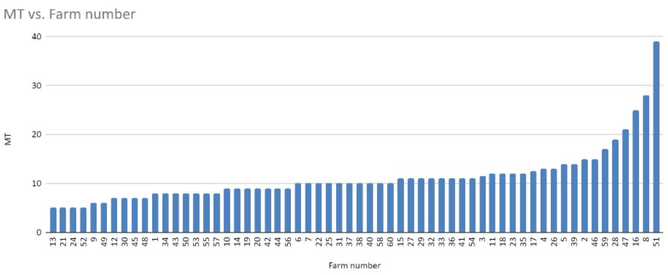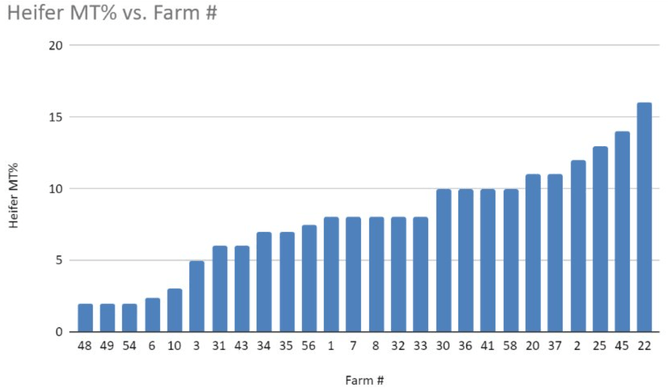Check out the key findings from this season's Repro Round-up.
Back in May, we had our Repro Round-up evening. Thank you to all those that attended - it was great to see the numbers growing and the discussion flowing.
Here is a short summary of our results for the season and a little of the discussion around them.
The average empty rate this season was 12%, compared to 11% last season. However, this year we also worked out medians, which sat at 10% (compared with 11% the previous season).
Most farms did better than in the previous season, however a few did a lot worse which then shifted the average up.
6WICR
The 6-week in-calf rate (6WICR) averaged the same as last season.
It is important to note that the 6WICRs are only from herds that have had an age scan. This is a method we can use to standardise the results.
If we just looked at empty rates, it would be hard to compare those that mate for only 9 weeks with those that mate for 14 weeks.
This data enables us to assess how quickly different farms manage to get their cows back in-calf. The range is from 83% to 54%, with an average 6WICR of 69%.
Empty rate
Meanwhile, the empty rates also include farms that just pregnancy check yes/no.
There is a much greater range in this data set, ranging from 5%-39%. The large skew to the right side of the graph demonstrates why we saw an overall higher average but a lower median for this season.
Heifer results
This season's heifer results were slightly disappointing and this stretched across all rearing systems - on platforms, run-offs and at graziers.
There have also been reports of poor heifer conception rates over the hill in Canterbury.
A lot of the farms have done the same thing as in prior years, so why the change? Given the really good growing conditions, my main thought around this is that the heifers were in a good condition at the start of mating and so, with that higher starting condition, did not experience the same raising plane of nutrition. This also coincided with a slight drop in grass quality.
This is not a definitive answer, and it is probably largely multi-factorial and will vary farm to farm, but I suspect it is a contributing factor.
Wearable tech
During the Repro Round-up evening, we had a discussion around cow wearable technology and its influence on pregnancy rates and submission.
Next season we will also look at pulling out data and comparing herds on their predominant breed composition, and a comparison on milking routines (OAD vs TAD vs 10in7 etc).
Keep an eye out next April as we will hold our next Repro Round-up during the first week of May. It would be great to see you there!





